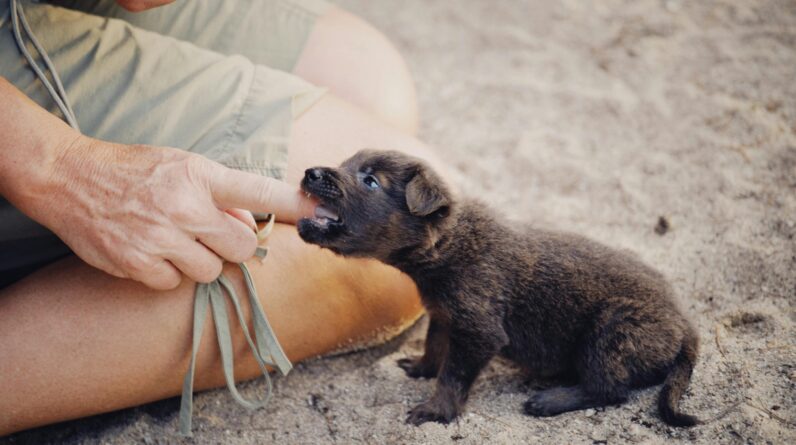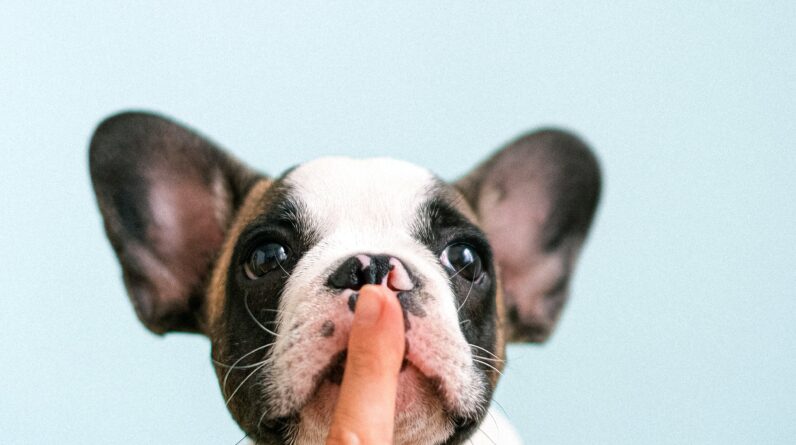
A Guide to Socializing Your Puppy
Socializing your puppy is a vital aspect of their development, and it’s essential to introduce them to different, objects, people, animals, and environments in a positive way. The more positive experiences they have, the less likely they will develop fear or anxiety towards them in the future.
The ideal time to start socializing your puppy is between three to 14 weeks of age when they are most receptive to learning and eager to explore. It’s crucial to make these experiences positive and enjoyable for your puppy, as this will help shape their behavior and attitude towards new things throughout their life.
1. Socialize at Home
To socialize your puppy effectively, there are various things you can do at home to create a safe and comfortable environment for them.
One approach is to introduce them to different stimuli, such as doorbells, vacuum cleaners, , people wearing hats, and other household pets. The goal is to show your puppy that these things are not scary and help them feel at ease around them. Keep these interactions short and manageable to avoid overwhelming your pup.
Taking your puppy for a 10-minute walk in the neighborhood is also an excellent way to provide socialization opportunities. They will encounter new sights and sounds, like cars, motorbikes, other animals, birds, and squirrels.
When facilitating new interactions, be sure to reward your puppy with treats. This reinforces positive experiences and helps them associate new things with good things happening.
Finally, make sure to seek out other dogs for your puppy to socialize with. This can help them become more tolerant of other dogs and prevent fear-based aggression in the future.
2. Socialize in Public
Puppies are incredibly sensitive to the interactions they have with people and other animals, so it’s vital that you take them on regular socializing walks around your neighborhood. This will help them develop the trust and understanding they’ll need to have positive interactions with all kinds of different people and pets in their life.
You can also go out to restaurants, the mall, or other public places to get your puppy used to the sights, sounds, smells, and feel of different environments. During these short trips, be sure to keep them on a leash so they don’t feel threatened or attacked by a stranger or dog.
Be careful to only introduce your puppy to new situations and people when they are not too hyper or exhausted from playing with you. If you force your puppy into an interaction when they are tired, they may become stressed or feel threatened.
If your puppy is unsure about the situation, they will often display signs like tail tucked, ears back, and wide eyes. They’ll also be more likely to yawn or cling to you.
It’s important to be able to read your puppy’s body language and know what to do when they are hesitant or fearful. If your puppy is yawning, tense, or turning their head away, try to leave the area as soon as possible. You can add distance or decrease the intensity of the exposure if necessary to allow them time to settle and acclimate to the situation.
3. Socialize in the Car
There are a number of things you can do to help your puppy get used to traveling in the car. These include introducing them to cars, taking them on short trips, and using positive interactions to build up their confidence.
You will want to take your time with this, ensuring you expose them to the car gradually, using plenty of praise and treats. As you progress through this, they will feel more confident and comfortable in the car, so it should not be long before your puppy is able to travel in it without fuss.
When your puppy is in the car, it is a good idea to keep them restrained with a dog carrier, as this will help them be less of a distraction for other passengers and the driver. You can start this as early as possible, but it will take some time for your puppy to become comfortable with the carrier.
If your puppy is nervous about being in a vehicle, you can also introduce them to a stationary car before you start traveling. This will help them acclimatize to the noises of a moving vehicle, and allow them to calm down before you jump in the car.
When socializing your puppy, it is important to use positive interactions as they will make a huge difference to their behavior when they are grown up. This can include letting your puppy approach people and animals at their own pace, being gentle, and showing kindness to those around them.
4. Socialize in the Park
Puppies should be exposed to a wide range of new people, animals, and situations. Ideally, this will happen as early in life as possible to give them a positive, confident experience and prepare them for their future lives with you.
For example, puppies should meet people of all races, sizes, and ages, as well as those with hats, sunglasses, or who are physically challenged. This can be done in a variety of ways, from pet stores to social events such as dog shows or adoption fairs.
To do this, you should slowly introduce your puppy to individuals or small groups of people, and then work up to larger crowds. This can be done in a variety of ways, such as at your house or at the park.
It is important that you do this in a way that is as stress-free as possible so that your puppy learns to be comfortable with the experience. It is also helpful to be aware of your puppy’s reaction and remove them from the situation if they are showing signs of fear, anxiety, or reactivity.
For your first visit to the park, try going for a short off-leash lap around the inside of the park so that you and your dog can get to know each other. If everything goes well, you can plan to stay for longer next time.
5. Socialize at the Vet
It’s important to socialize your puppy as early as possible, especially if they’re going to have frequent visits to the vet or groomer. This can help your pet feel safe and comfortable with the experience of being handled.
A good way to start is by handling your puppy’s paws, ears, and body in different ways. This helps them become familiar with your touch, which can then be used to trim nails, brush their teeth, clean their ears, and give medications if necessary.
Some puppies are naturally more sensitive than others, and it’s important to observe them before attempting to socialize them in new situations. If they’re displaying fear or anxiety, don’t force them to enter the situation; instead, remove them from it and give them lots of praise and treats.
Puppies are most receptive to new experiences during the early months of their lives, which means they’ll have the best chance of developing essential socialization skills. This is why many experts recommend beginning puppy socialization when they’re puppies, and not waiting until their vaccination series is completed.
Getting your puppy out into the world early in their lives is crucial to preventing behavioral problems later in life, such as separation anxiety and leash reactivity. It’s also a great way to help your dog be a happy, well-adjusted member of society! If you’re not sure where to begin, ask your veterinarian for recommendations.
6. Socialize in the Pet Store
Positive interactions play a crucial role in maintaining your puppy’s mental well-being. It’s important to expose them to a variety of animals, environments, and people from different backgrounds to encourage appropriate socialization. This can help reduce the risk of depression, anxiety, and dementia in the future.
It’s also important to pay attention to your puppy’s body language during socialization. If they’re yawning, clinging to you, or turning their head away, they may be feeling overwhelmed or anxious.
Visiting a pet store with your puppy is an effective way to introduce them to new people and situations. Ensure that you take them to places where they can interact with other pets, especially other puppies.
Encouraging your puppy to be friendly towards people by giving them treats during each interaction can help them associate new experiences with positive feelings. This can make them less likely to shy away from people and their hands.
Introducing your puppy to other dogs at a young age, when they are more receptive to new experiences, can help them develop a strong social bond. Letting them sniff each other and gradually acclimating them to each other’s presence can help build a positive relationship between them.





